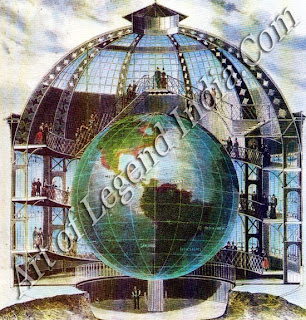French Great Artist Paul Gauguin - A Year in the Life 1889
Posted by
Art Of Legend India [dot] Com
On
10:40 PM
The
collapse of the Panama Canal scheme, on which Gauguin himself had worked as a
labourer, was the worst financial scandal to hit France for centuries. Austria
too was rocked by scandal, when the Crown Prince committed suicide with his
lover. And in London, dock workers made history with a famous strike for wages
of sixpence an hour.
For the
Vicomte Ferdinand Marie de Lesseps promoter of the Suez Canal, diplomat,
entrepreneur and a distinguished member of the French establishment 1889 was a
disastrous year. His latest scheme, to build a sea-level canal across the
Isthmus of Panama from the Atlantic to the Pacific, had collapsed around his
ears. In February, the Panama Canal Company revealed debts of more than
£60,000,000 and an official investigation exposed a vast scandal.
To keep
the work going at all, it had been essential to find more money, and such was
De Lesseps' reputation that thousands of small investor’s cab drivers,
shop-keepers, and peasants had poured their savings into the venture. But the
problems continued to grow. Despite the importance of the enterprise for French
prestige, the government refused any financial support until December 1888,
when an issue of lottery bonds was finally authorized. And when these proved
undersubscribed, the company had no choice but to go bankrupt in February 1889.
It was the greatest financial disaster in France for 200 years.
The
government tried to hush up the scandal, but eventually De Lesseps and some of
his associates were put on trial. The enquiry revealed that financial control
of the company was exercised by two Jews with dubious reputations but high
political connections. These revelations caused the government grave
embarrassment and fuelled the flames of anti-serenities in France. De Lesseps
was arrested, convicted of misappropriating funds, and sentenced to five years
in jail. But in the event, his punishment was restricted to public humiliation
as the verdict was later quashed.
The
same year the doomed Habsburg Empire of Austria and Hungary was also rocked by
scandal. Crown Prince Rudolph, heir to Emperor Franz Joseph, shot himself
through the head with a revolver on 29 January at Mayerling, a shooting lodge
in the wooded hills some 20 miles from Vienna. Next to his body was found that
of 17-year-old Baroness Marie Vetsera, the niece of a rich Levantine banker and
a ravishing 'oriental' beauty. It was a suicide pact. But what was the motive?
Rumours
of a family conflict were rife throughout Europe. The Prince, though a dreamer,
was known to be at odds with his father's policy of appeasing Russia, their
powerful neighbor. Moreover, Rudolph's marriage to Stephanie, daughter of
Leopold II of Belgium, was not a success. It had been arranged by the Emperor
and Rudolph took refuge in drink, drugs and love affairs.
The
Prince wrote farewell letters to his wife and mother, but not a word to his
father. Their contents have never been revealed, but it seems that Rudolph was
mentally unbalanced, seized by a romantic vision of death. 1-le probably felt
himself to be a failure, unable to translate his vision into political action
when he saw his father's character and policy leading the Empire to disaster.
But
1889 saw triumphs as well as tragedies. Gustave Eiffel, who designed the locks
for the Panama Canal, had his greatest success on 31 March when he saw his
1,000 foot cast-iron tower inaugurated in Paris. The tower cost some £240,000
to build and weighed 7,000 tons. A spiral iron staircase of 1,600 steps ran up
the centre of the tower, but most visitors found this too vertigo-inducing and
preferred to take the lift, which took seven minutes to reach the summit.
The
Eiffel Tower was to prove the principal attraction of the Paris International
Exhibition opened by the President of the Republic, Sadi Carnot, on 6 May. The
Exhibition ran until 6 November, displaying the industrial and commercial
wealth of France, and attracted 2,500,000 visitors. But 1889 was also the
centenary of the French Revolution and the spirit of rebellion was aroused.
When the President left his official residence at the Elysee Palace to drive by
carriage to the Palace of Versailles, a disaffected, anti-Republican
storekeeper named M. Perrin fired a revolver at him. But the cartridges were
blank and the President was able to proceed to Versailles unharmed.
In
London, political events were less flamboyant, but their influence was
longer-lasting. In August and September, Ben Tillet led the London Dockers in
their famous strike to demand 'the docker's tanner' a wage of just 6d an hour.
The docker’s leaders were skilful in stirring up popular opinion and £4,500 was
raised by general subscription. By the end of the year, their union numbered
30,000 members: evidence of the now rapid growth of unionism among semi-skilled
and unskilled workers.
Not far
from the docks, in the East End streets around Whitechapel, 'Jack the Ripper'
continued his grisly business. In July the body of a woman called Mackenzie was
found brutally murdered and, at dawn on 10 September, a policeman found a
mutilated female torso under a railway arch in Whitechapel. In December, the
year ended in triumph for the explorer Henry Morton Stanley who finally reached
Zanzibar. But for Charles Parnell, the hero of Irish nationalism, 1889 ended in
despair. He was cited in divorce proceedings by Captain O'Shea, the husband of
his mistress Katherine. In Catholic Ireland, the disgrace finished Parnell's
career, and the campaign for Irish Home Rule lost its most valuable leader.
Writer
– Marshall Cavendish
Subscribe to:
Post Comments (Atom)
















0 Response to "French Great Artist Paul Gauguin - A Year in the Life 1889"
Post a Comment